By Sean Fagan.
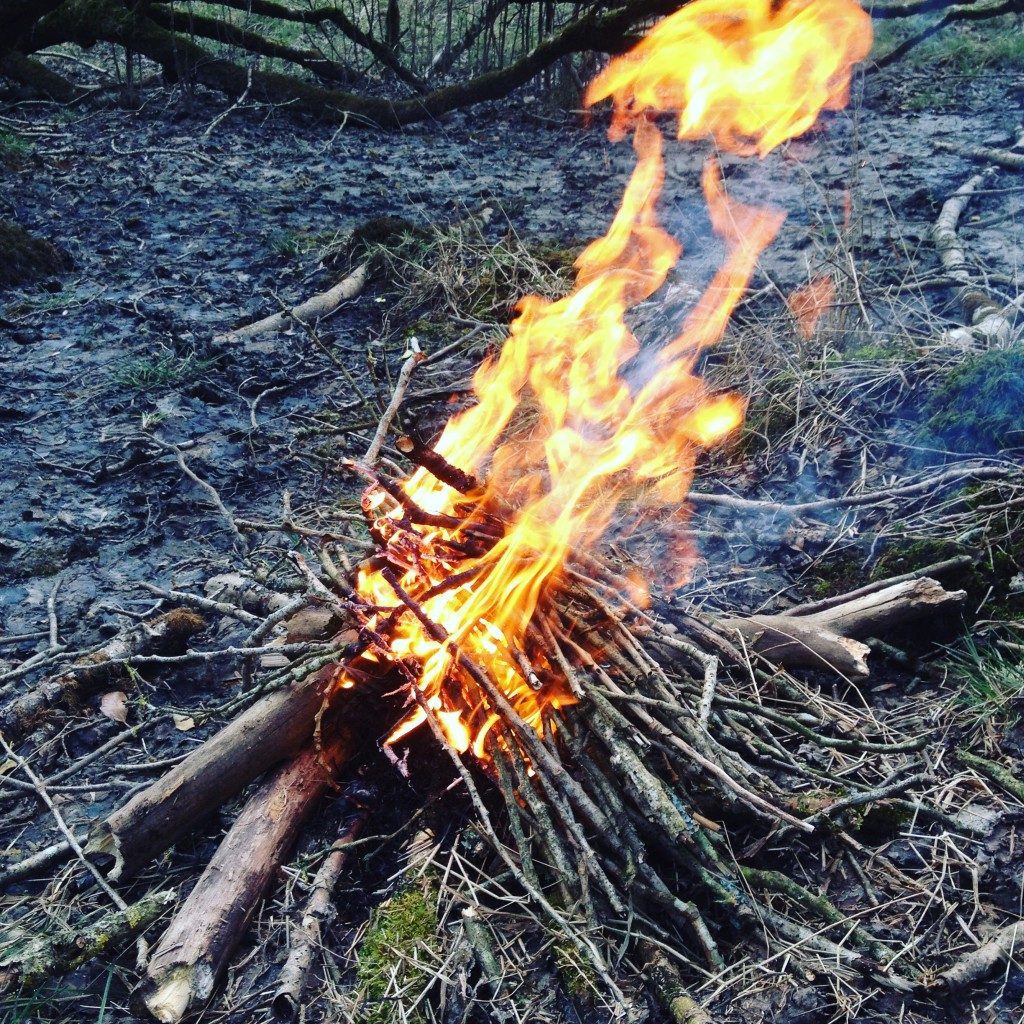
Fire skills are an essential part of bushcraft. Being as efficient as possible with fire skills will save time and energy - especially important when a fire is required in an emergency such as hypothermia (Photo: Sean Fagan).
.
One of the main goals of bushcraft is to be as efficient as possible. One area of bushcraft, which greatly benefits from improved efficiency is cutting down on the time required to collect fuel and kindling for a camp-fire..
Planning ahead: Re-visiting a Campsite...
.
A common reality for many bushcrafters is re-using a campsite.
It makes practical sense to re-visit a campsite - a place where an individual knows the lie of the land, where fresh water is obtainable, etc.
I have a few places I like to revisit - mostly because I admire the natural beauty & wildlife of these sites.
Such sites provide a base of familiarity that can be good for improving bushcraft skills & knowledge over time (such as the seasonal variance of track & sign, wild food & plants).
When repeatedly camping in the same spot, it's a good idea to stash some fuel and kindling (and even tinder), because the time between visits usually allows these camp-fire resources to dry out and become a lot more combustible.
In the case of an environmental threat, such as hypothermia, having a ready-made stash of fuel and kindling can often get a strong, warming camp fire going much quicker and a lot more easily.
It can also ensure a much greater chance of igniting a fire - first time!
STORING FUEL
.
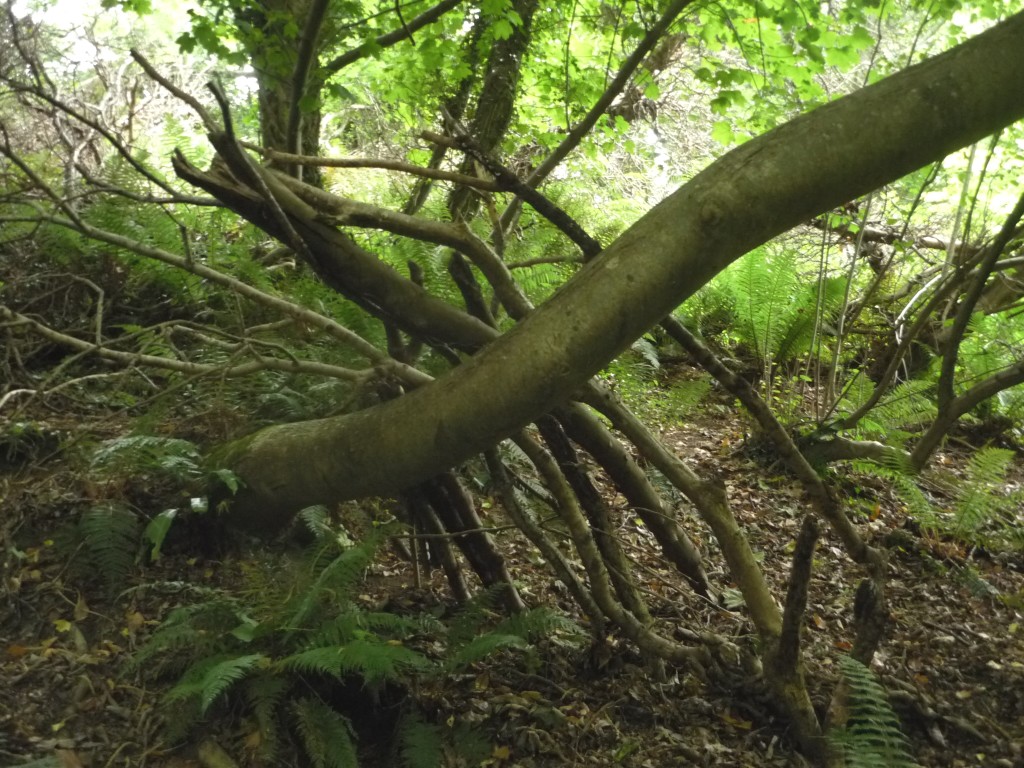
When stashing large dead branches as fuel, make sure there are plenty of gaps between the branches to ensure good air flow (Photo: Sean Fagan).
.
Basically, I prop thick, dead branches against trees (or any other large structure) in a vertical position.
By placing dead branches in an upright position, rain will be easily shed and the wood will be exposed to the drying effects of the wind.
What I often do, is collect and prop the many dead (but still firm) branches that are scattered on the damp, woodland floor - which are usually too damp to burn.
Usually, by the time I camp again at the same site, the branches I previously collected on the woodland floor are a lot drier. A great way of using an abundant and often overlooked resource.
.
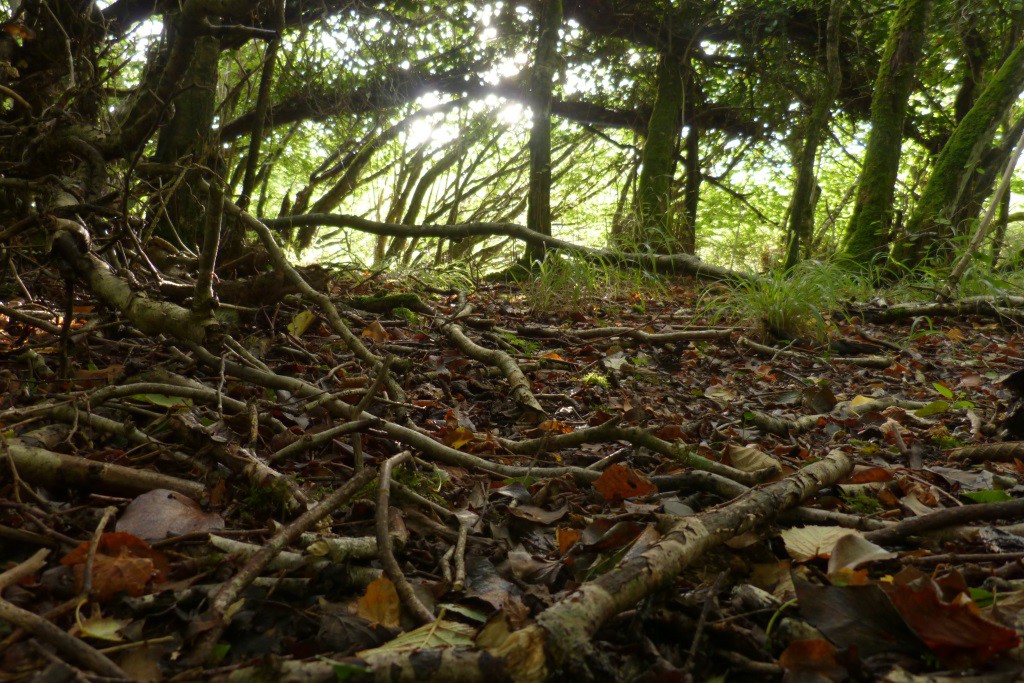
On the woodland floor there is often abundance of damp but firm, dead branches and twigs. When dried, these make for excellent fuel and kindling (Photo: Sean Fagan).
.
When stashing propped branches - make sure there are wide enough gaps between the propped branches to allow sufficient air flow for optimal drying.
For maximum drying - store the branches as vertical as possible - facing the prevailing wind direction, and if possible, place in an area open to the sun. The combination of sun and wind will greatly speed up the drying process.
Extra tip: prop the dead branches atop either rocks or other large branches - this will ensure there is no contact between the drying wood and the damp woodland floor. I don't do this often, but when I do, the dead branches are a lot drier at the bottom end of the branch.
This is especially useful if you are drying off wood that you plan to use for carving projects (such as bow-making).
.
.
STORING KINDLING
.
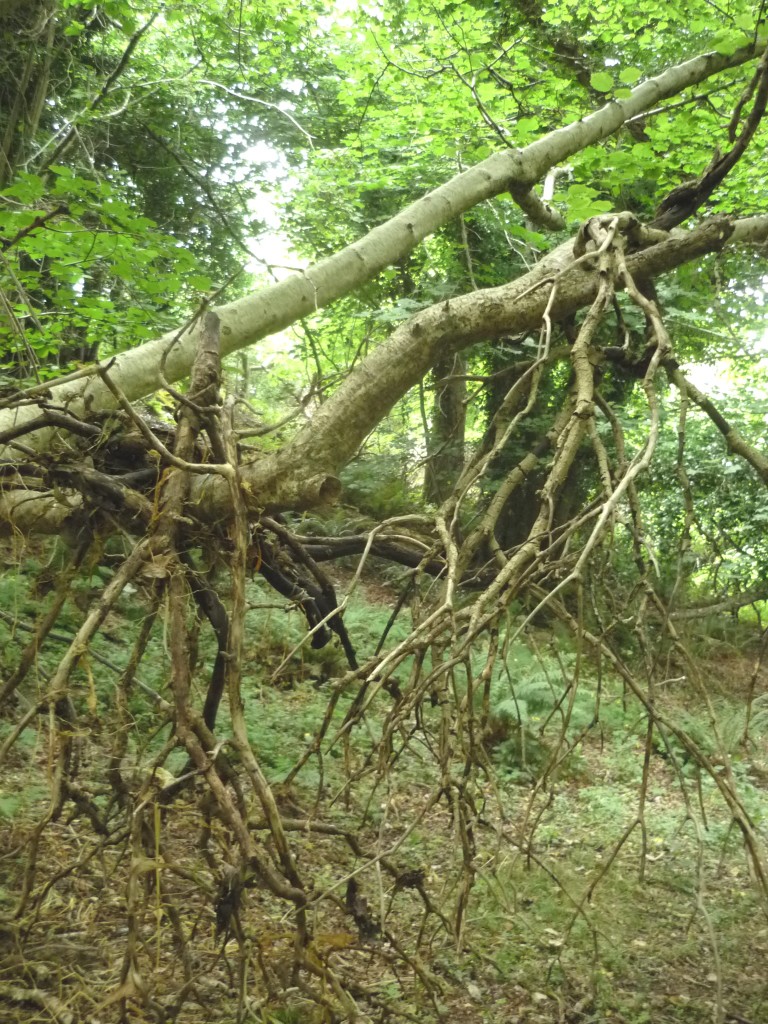
Suspended dead twigs of ivy - By suspending dead twigs they become much drier. I collected these dead twigs from the damp, woodland floor. Instead of having to rely heavily on dead twigs still attached to trees, I can avail of a common, mostly underused resource in Bushcraft - dead twigs on the woodland floor (Photo: Sean Fagan).
.
Basically, I suspend dead twigs from horizontal branches.
This keeps the kindling off the damp woodland floor and exposed to air flow. The suspended, dead twigs are always a lot drier by the next time I visit.
Simple but effective.
Often I collect two large bundles of dead, damp twigs on the woodland floor and tie them up separately with a length of string between them (usually with old pieces of string I want to recycle).
I then hang the two bundles of twigs with the length of string between them, over the branch.
Usually, within woodlands there is an abundance of dry kindling in the form of dead twigs that are attached to living trees.
So, storing kindling might seem unnecessary.
However, there are times when storing kindling can prove advantageous.
Such as when a campsite is exhausted of most of the dead-twig kindling attached to trees - but there is an abundance of damp, dead twigs upon the woodland floor.
Personally, I often suspend kindling to make the whole process of lighting a fire easier.
Sometimes I have other priorities other than collecting dead twigs when lighting fires - and I want to hasten the process.
Of course, some die-hard bushcraft purists might balk at me for not collecting all the necessary fire-lighting materials in their natural state, each and every time I enter the woods to ignite a fire.
But I ignite a lot of fires in nature - and sometimes I want to get on with other things.
I would urge you to think for yourself in this regard - and not fall prey to the dogmatism that permeates a lot of modern bushcraft.
.
What I especially like about these simple ways of storing fuel and kindling is that it blends in with the woods.
It doesn't jar with the look and feel of the woods - I've even had animals such as foxes, feral cats and woodmice take temporary shelter in my stashes of dead branches.
Of course, making more weather-proof firewood shelters can be important - such as storing firewood under a tarp.
.
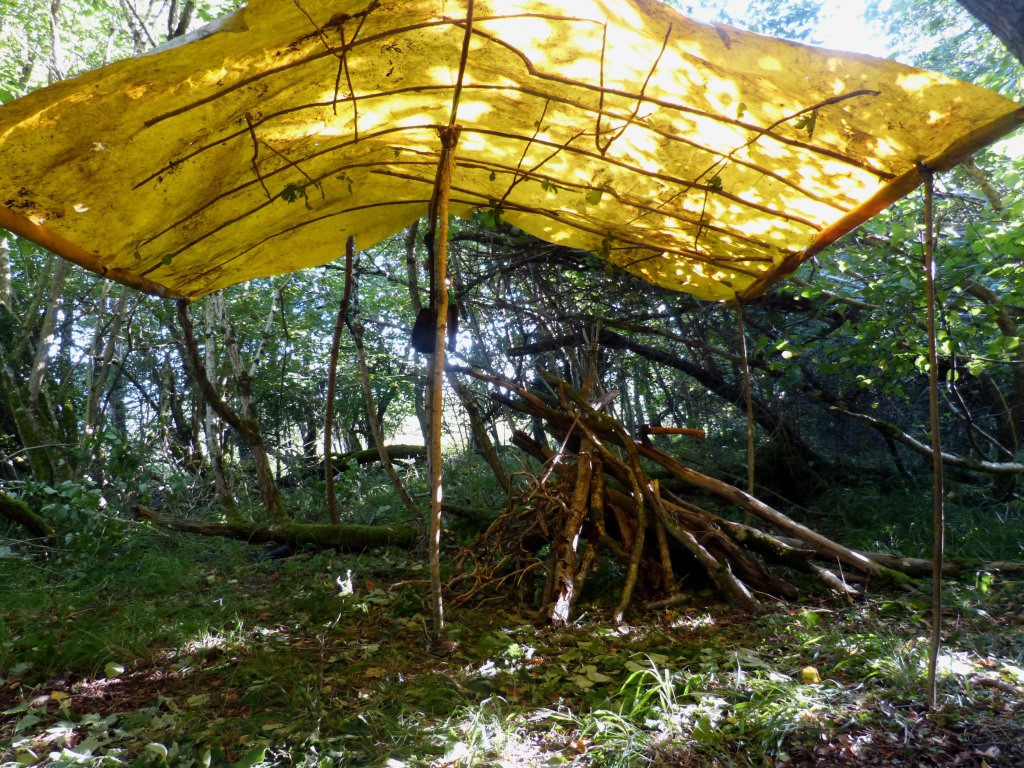
Storing fuel, kindling & tinder under a tarp can be important when camping in damp weather - when there is more of an immediate need for having dry, fire-lighting materials (Photo: Sean Fagan).
.
Don't let the simplicity of storing fuel and kindling out in the open discourage you from trying it out.
Humankind have been employing this method of drying wood for a long time (Most likely since prehistoric times).
Where this method of seasoning wood excels is the lengthy bouts of drying time.
I've often come back to some wood stashes (even in winter) after relatively short period of time (such as 2 weeks) - to find the stored wood a lot drier and combustible.
Another benefit with storing kindling (and tinder) at a camping site is that you will know where there is, to hand, a dry source of kindling and tinder which can be ignited a lot quicker than going through the more lengthy process of collecting such materials in there natural state.
This can be important when an individual is suffering from an emergency that requires the rapid application of heat as a remedy - such as hypothermia.
And that's the other, more compelling reason why I always keep a stash of kindling and fuel at a campsite.
This is especially relevant when remote camping, where the climate is damp or cold, or both.
After all, it usually takes me only 10-20 minutes to put away a good-sized stash of kindling and fuel.
That's time well spent.
.
Related:.
Glossary:- Combustible: Able to catch fire and burn easily.

Recent Comments